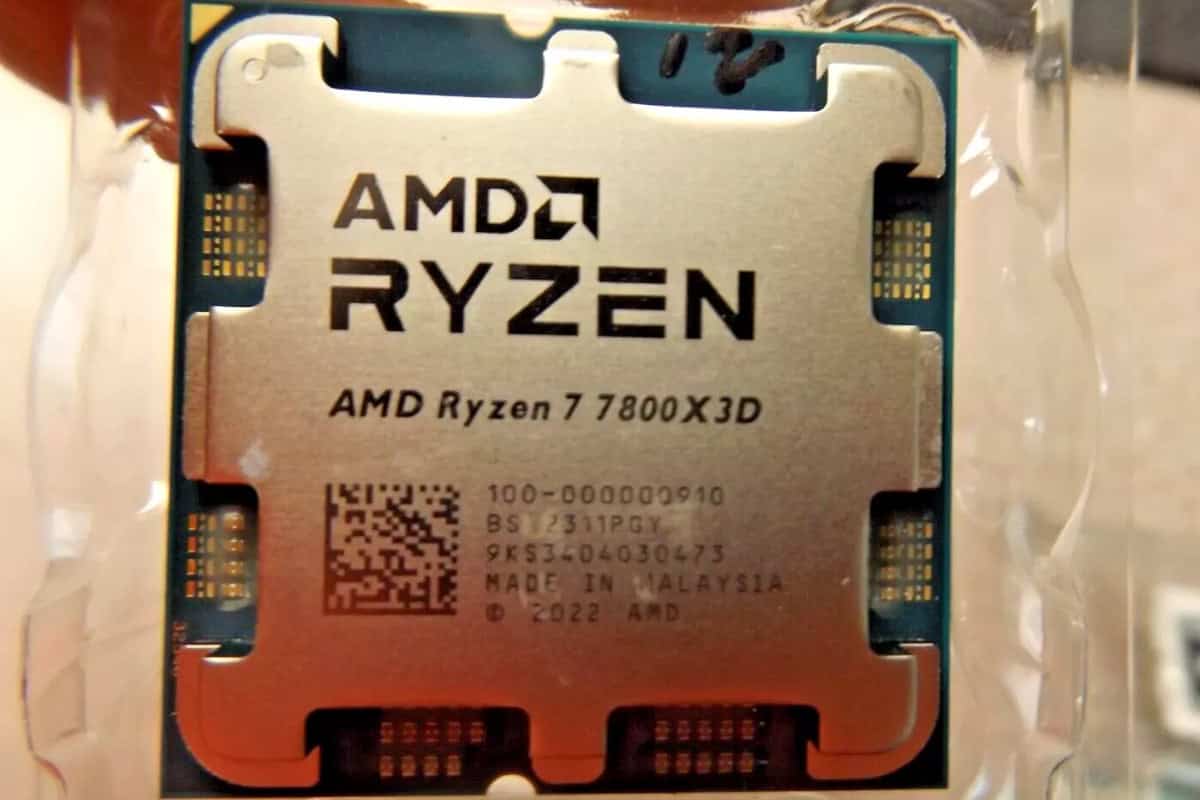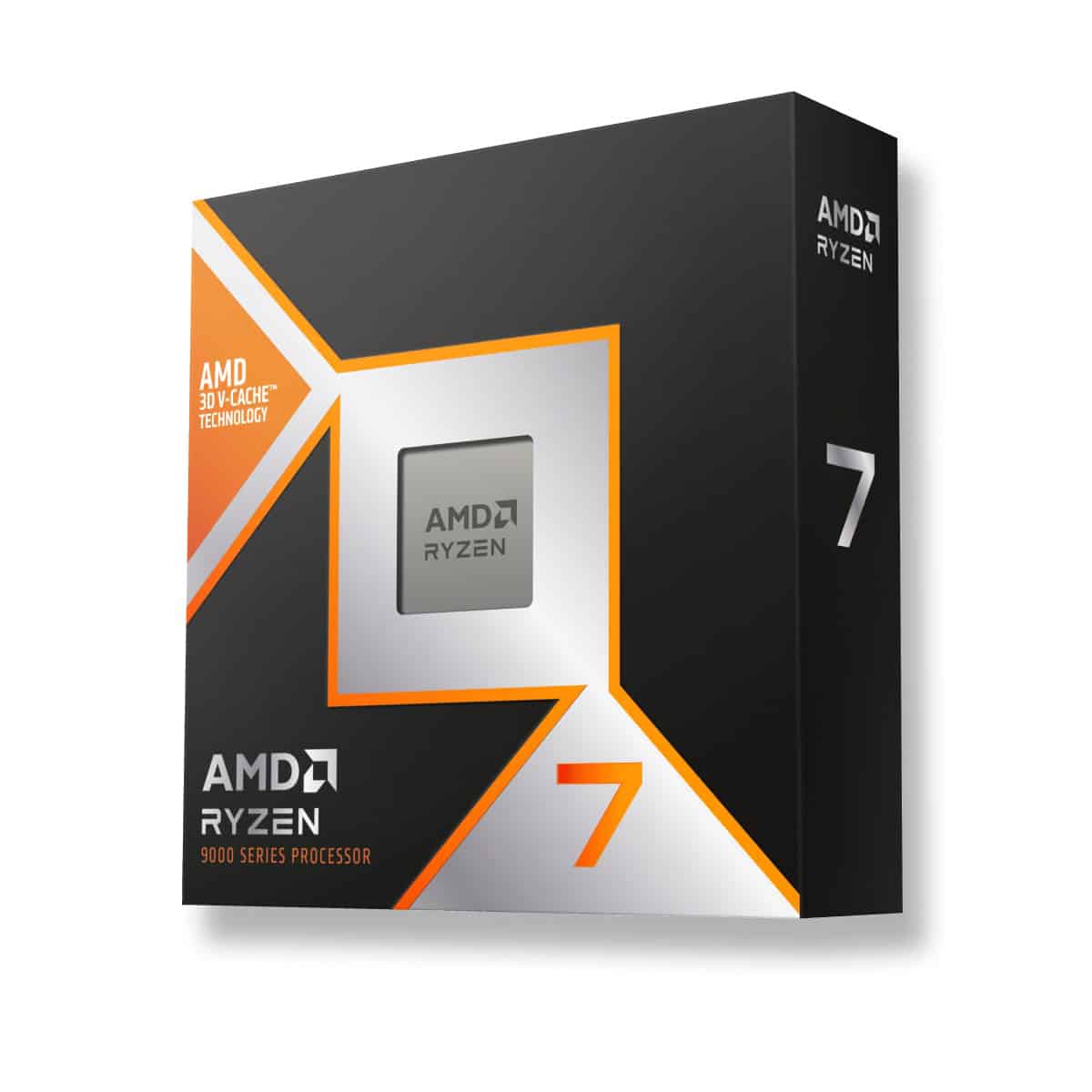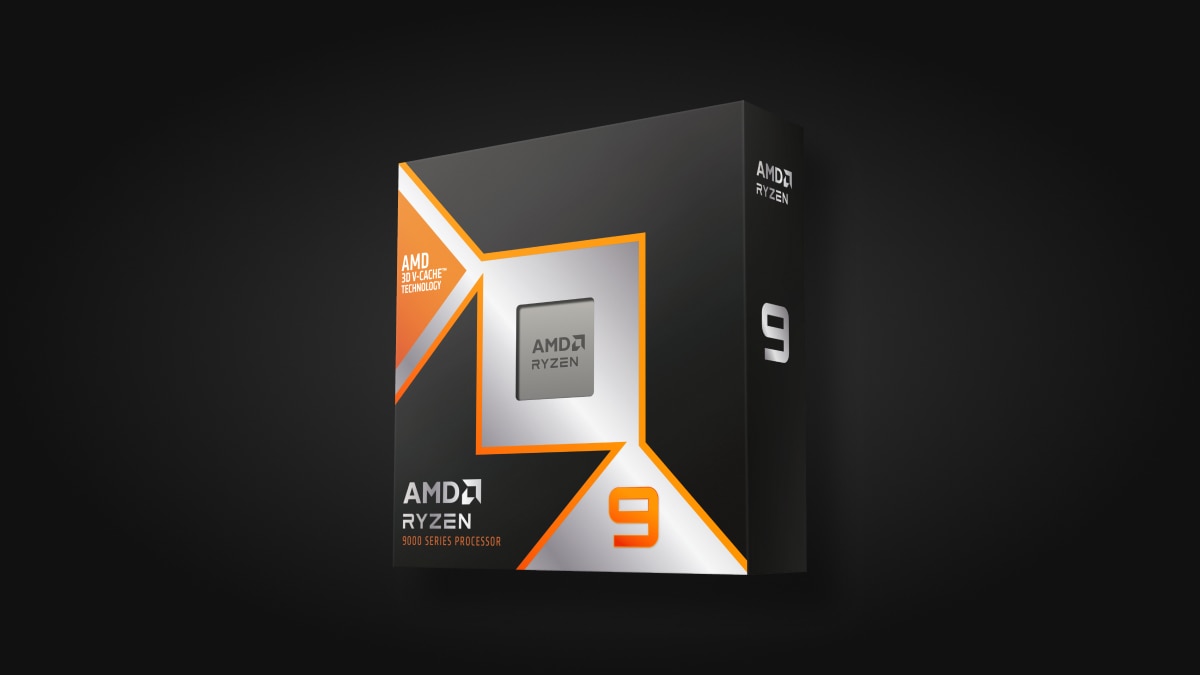AMD has finally unveiled its long-awaited Zen 5 X3D CPUs — the Ryzen 9 9950X3D and Ryzen 9 9900X3D — setting off a new wave of comparisons with the still-beloved Zen 4 X3D lineup. While Zen 5 offers meaningful architectural upgrades, the big question for gamers remains: Do these improvements make Zen 5 X3D chips the new gaming kings? Or does Zen 4 X3D still wear the crown?
Let’s break down how these two generations compare — not just on paper, but where it matters most: real-world gaming performance, power efficiency, and value.
⚙️ Architectural Differences: Zen 5 X3D vs Zen 4 X3D
| Feature | Zen 5 X3D (9950X3D, 9900X3D) | Zen 4 X3D (7950X3D, 7900X3D, 7800X3D) |
|---|---|---|
| Process Node | TSMC 4nm | TSMC 5nm |
| IPC Improvement | ~10-15% (depends on workload) | Baseline for comparison |
| Floating Point Perf | Up to 24% better vs Zen 4 | Lower than Zen 5 |
| Cache (L3 with V-Cache) | Up to 144MB | Up to 128MB |
| Memory Support | DDR5, up to 8000 MT/s (OC) | DDR5, up to 6000 MT/s (OC recommended) |
| Platform | AM5 | AM5 |
| Power Efficiency | Improved due to 4nm and arch tweaks | Efficient, but less than Zen 5 |
Zen 5 introduces a reworked front-end, wider instruction dispatch, and smarter branch prediction. These translate to higher IPC (instructions per clock) and better performance per watt. But these gains are typically more noticeable in productivity and compute-heavy tasks, rather than gaming.

Gaming Performance: More Cache or More IPC?
Here’s the twist: Zen 4 X3D chips still dominate many gaming benchmarks, especially the Ryzen 7 7800X3D, which continues to deliver elite performance thanks to its massive L3 cache (via 3D V-Cache) and single CCD design — which reduces inter-core latency.
Meanwhile, early testing of the 9950X3D and 9900X3D shows slightly higher performance in some newer titles optimized for multi-threaded CPUs and faster memory subsystems. But the gains over Zen 4 X3D are often small — 5-10% at best, and in some cases, Zen 4 still pulls ahead.
Why?
3D V-Cache is a game-changer because it drastically reduces memory latency, especially beneficial in titles like CS2, Factorio, or Microsoft Flight Simulator. Zen 5’s IPC and bandwidth gains don’t always overcome the raw caching advantage of the Zen 4 lineup in games where cache access is king.
Power Efficiency and Platform Longevity
Zen 5’s 4nm process helps keep power consumption lower at the same performance level. The 9950X3D (170W TDP) is still power-hungry but manages better thermals than older 16-core chips.
That said, both Zen 4 and Zen 5 X3D CPUs share the AM5 platform, so they support the same motherboards and DDR5 memory. Upgrading from a Zen 4 X3D to a Zen 5 X3D makes sense only if you’re also planning to push the limits in productivity tasks (video editing, 3D rendering, simulation) — not just gaming.
Bottom Line: Who Should Buy What?
- Buy Zen 4 X3D (like 7800X3D) if you want best-in-class gaming performance per dollar, especially at 1080p or 1440p. Still the go-to for pure gaming builds.
- Buy Zen 5 X3D (9950X3D/9900X3D) if you want a hybrid powerhouse for gaming and creative workloads, or you’re already on AM5 and want the best of both worlds — with a little more future-proofing.

Zen 5 X3D vs Zen 4 X3D
| Feature/Benchmark | Zen 5 X3D (Ryzen 9 9950X3D) | Zen 4 X3D (Ryzen 9 7950X3D) |
|---|---|---|
| Architecture | Zen 5 + 2nd-gen 3D V-Cache | Zen 4 + 1st-gen 3D V-Cache |
| Process Node | TSMC 4nm | TSMC 5nm |
| Cores / Threads | 16 / 32 | 16 / 32 |
| Base Clock Speed | 4.3 GHz | 4.2 GHz |
| Boost Clock Speed | Up to 5.7 GHz | Up to 5.6 GHz |
| Total Cache | 144 MB | 128 MB |
| Memory Support | DDR5 up to 8000 MT/s (OC) | DDR5 up to 6000 MT/s (OC recommended) |
| TDP (Power Draw) | 170W | 120W |
| Gaming Performance (1080p) | Up to 8% faster in modern AAA titles | Still slightly better in cache-bound titles |
| Productivity Benchmarks | Up to 13% faster in rendering & editing apps | Strong, but slightly behind in multi-core |
| Efficiency | Higher performance-per-watt | Lower TDP, but less efficient at max load |
| Thermal Management | Improved, thanks to architecture tweaks | Good, but can throttle under heavy load |
| Price at Launch | $699 | $699 |
🧠 Summary of Key Differences
- Zen 5 X3D delivers stronger performance in heavily threaded workloads and select modern games that scale with memory bandwidth and IPC.
- Zen 4 X3D maintains better performance in latency-sensitive games due to its L3 cache structure and single CCD design (especially the 7800X3D).
- Efficiency and Future-Proofing lean toward Zen 5, though Zen 4 X3D still holds excellent value for gaming builds.
If you’re building a top-tier gaming rig and want the best frames per dollar, Zen 4 X3D — especially the 7800X3D — remains a killer choice. But if you want a do-it-all chip for gaming and creation tasks with cutting-edge efficiency, Zen 5 X3D pulls ahead.
Key Takeaways
- Zen 5 X3D brings IPC gains, better memory bandwidth, and higher efficiency, but gaming improvements are modest over Zen 4 X3D.
- Zen 4 X3D is still the best bang-for-buck for gamers, especially the 7800X3D.
- Platform compatibility (AM5) keeps both generations viable for years to come.
- For mixed workloads or future titles optimized for new architectures, Zen 5 X3D might have a longer tail, but for right now — the choice depends on your use case, not just the generation number.
Architectural Advancements
Zen 5 introduces significant architectural changes over Zen 4, with redesigned cores and enhanced performance capabilities. These improvements affect how the X3D versions of each generation handle gaming and productivity tasks.
IPC Improvements and Core Design
Zen 5 features a ground-up redesign of the CPU architecture compared to Zen 4. The new design delivers higher instructions per clock (IPC), which means better performance even at the same clock speeds.
When tested at identical 4.8 GHz frequencies, Zen 5 shows notable gaming performance improvements over Zen 4. These gains come from important architectural changes that address previous bottlenecks in the design.
The core layout in Zen 5 processors has been optimized for better data flow and processing efficiency. This results in smoother performance in CPU-intensive tasks and better handling of complex workloads.
Branch prediction and cache management have also been improved, reducing latency in operations that require quick access to data.
3D V-Cache Integration
The 3D V-Cache technology continues to be a key feature in both Zen 4 and Zen 5 X3D processors. This technology stacks additional L3 cache on top of the CPU cores.
In Zen 4 X3D models like the Ryzen 7 5800X3D, the 3D V-Cache provided significant gaming performance benefits. Zen 5 builds on this foundation with improved integration of the cache layers.
The connection between the core and cache has been enhanced in Zen 5, allowing for faster data access and reduced latency. This means games and applications can retrieve information more quickly.
Heat distribution has also been optimized in the newer design, addressing some thermal challenges that affected the performance of earlier X3D models.
Compatibility and Power Efficiency
Both Zen 4 and Zen 5 X3D processors use the Socket AM5 platform, ensuring backward compatibility for users upgrading their systems. This means Zen 5 processors can work in motherboards designed for Zen 4.
Power efficiency shows mixed results between generations. While Zen 5 architecture is generally more power-efficient, there are specific scenarios where Zen 4 actually demonstrates better efficiency.
The 65W power envelope options in both generations provide a good balance between performance and energy consumption. However, Zen 5 typically delivers more performance per watt in most workloads.
Configuration options for power and performance tradeoffs have been expanded in Zen 5, giving users more control over how their processor operates under different conditions.
Performance Metrics and Benchmarks
Comparing Zen 5 X3D and Zen 4 X3D CPUs reveals notable differences in raw performance, efficiency, and thermal characteristics. Test results show varied improvements across gaming, productivity workloads, and overclocking potential.
Gaming and CPU Benchmarks
The Ryzen 7 7800X3D from the Zen 4 generation has been widely regarded as the fastest gaming chip until the arrival of Zen 5 X3D processors. Recent benchmarks show the Ryzen 9 9900X offering 5-10% better gaming performance in most titles compared to the 7800X3D. This improvement varies by game, with some CPU-intensive titles showing gains up to 15%.
In standard CPU benchmarks like Cinebench R23, the Zen 5 architecture provides modest gains. The Ryzen 9 9950X outperforms the Ryzen 9 7950X by approximately 10-15% in multi-core tests. These gains are less dramatic than initially expected, with efficiency improvements around 7% when comparing similar TDP models.
FPS metrics in popular titles like Cyberpunk 2077 and Counter-Strike 2 show the 9000 series pulling ahead, especially at 1080p where CPU limitations are more apparent.
Single-Threaded and Multi-Threaded Workloads
Zen 5 X3D CPUs show their biggest gains in single-threaded performance, with approximately 15-20% improvement over Zen 4 counterparts. This boost directly benefits applications like CAD software and certain productivity tools that rely heavily on single-core speed.
The Ryzen 5 7600X trails behind the newer Zen 5 equivalents by roughly 12-18% in single-threaded tests. However, multi-threaded improvements are more modest. Testing shows the Ryzen 9 9900X delivering about 8-12% better multi-threaded performance than comparable Zen 4 X3D processors.
Content creation benchmarks like video rendering and 3D modeling show the real-world benefits of these improvements. Render times for complex projects decrease by approximately 10-15% when moving from Zen 4 X3D to Zen 5 X3D at similar core counts.
Thermal and Overclocking Capabilities
Zen 5 X3D processors run slightly cooler than their Zen 4 predecessors at stock settings despite performance gains. Tests show average temperature decreases of 3-5°C under full load when using comparable cooling solutions.
Overclocking headroom remains limited on both generations due to the 3D V-Cache design. However, Zen 5 X3D chips respond better to PBO (Precision Boost Overdrive) tweaking, often gaining an extra 2-4% performance through automatic overclocking compared to manual attempts.
Cooling requirements remain similar between generations, with both Zen 4 and Zen 5 X3D CPUs benefiting from quality air coolers or 240mm+ AIOs for optimal performance. Power consumption per performance metric has improved slightly with Zen 5, though the difference is minimal—around 5% better efficiency at best according to power-normalized benchmarks.
Frequently Asked Questions
AMD’s Zen 5 X3D processors bring several key improvements over their Zen 4 X3D predecessors in performance, power efficiency, and architectural design.
What are the performance enhancements in Zen 5 X3D CPUs compared to Zen 4 X3D CPUs?
Zen 5 X3D CPUs offer approximately 10% higher performance than Zen 4 X3D models. This improvement comes from the revamped front-end design and wider execution engine.
The enhanced parallelism in Zen 5 architecture allows for better handling of simultaneous tasks. These upgrades benefit both gaming and productivity applications.
Games that showed little benefit from the X3D technology in Zen 4 will see more significant improvements with Zen 5 X3D processors.
How have cache architectures been improved from Zen 4 X3D to Zen 5 X3D?
Zen 5 X3D maintains the 3D V-Cache technology but implements it more efficiently. The stacked cache design has been refined to reduce latency when accessing cached data.
Zen 5 X3D processors feature improved cache coherency, allowing for faster data sharing between cores. This architectural advancement particularly benefits applications that rely heavily on cache performance, such as modern games.
What are the energy efficiency differences between Zen 4 X3D and Zen 5 X3D processors?
Zen 5 architecture is inherently more power-efficient than Zen 4. The X3D variants maintain this efficiency advantage while delivering the extra performance from the expanded cache.
The improved energy efficiency comes from architectural optimizations and the use of TSMC’s N4P manufacturing process. Users can expect better performance per watt, which translates to lower heat output and power consumption during similar workloads.
In what ways have the integrated graphics capabilities evolved from Zen 4 X3D to Zen 5 X3D?
Zen 5 X3D processors feature updated integrated graphics with improved shader units and higher clock speeds. These enhancements provide better performance for casual gaming and content creation without a discrete GPU.
The graphics architecture includes better hardware acceleration for modern video codecs. This improvement benefits users who regularly work with video content or stream media.
How does the Zen 5 X3D’s support for new memory technologies compare to that of Zen 4 X3D?
Zen 5 X3D processors offer expanded memory support with improved DDR5 compatibility and higher maximum speeds. The memory controller has been optimized to reduce latency and increase throughput.
These improvements complement the 3D V-Cache technology by ensuring that data can move quickly between system memory and the processor cache. Applications with large datasets benefit most from these enhancements.
What advancements have been made in the thermal design of Zen 5 X3D CPUs over Zen 4 X3D?
Zen 5 X3D processors feature improved thermal interface materials between the die and heat spreader. This change allows for more efficient heat transfer away from the CPU cores.
The power delivery system has been redesigned to distribute heat more evenly across the chip. These thermal improvements help maintain higher boost clocks for longer periods under load without thermal throttling.







